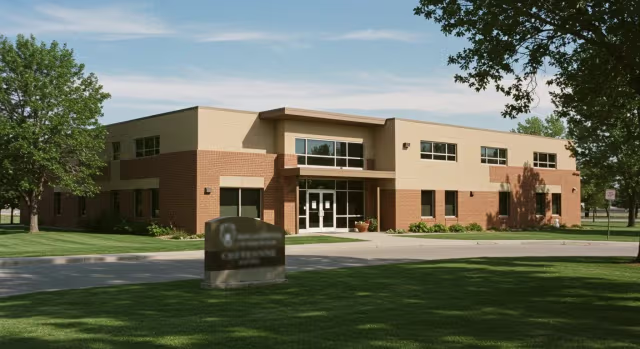IRS Compliant
Engineering-Based
100% Secure
R&D Tax
Credits
Maximize your innovation investments with R&D tax credits for qualifying research and development activities. Available across multiple industries.
250,000+
15x
3-4 weeks
Why Choose R&D Tax Credits?
Transform your innovation investments into substantial tax savings with our expert R&D tax credit services.
Research and Development tax credits (aka: R&D tax credits) are incentives offered by the government to encourage businesses to invest more in innovation and technological advancement. There are many benefits for implementing these tax incentives.
Average Credit
$125,000
Success Rate
95%
Time Saved
40+
The Four-Part Test
Understanding the IRS criteria for qualifying research and development activities. In order to qualify for research and development tax credits, businesses must meet the qualifications using the four part test IRS section 41 R&D tax credit.
What Qualifies as R&D?
New or Improved
Technological in Nature
Uncertainty Elimination
Experimentation Process
Qualifying Industries
Manufacturing
- New product development
- Process improvements
- Automation integration
- Quality control systems
- Typical Savings: 25-35%
Software Development
- Custom software creation
- Integration testing
- Cloud architecture
- Mobile app development
- Typical Savings: 25-35%
Life Sciences
- Clinical trials
- Drug development
- Medical device design
- Biotech research
- Typical Savings: 25-35%
Engineering & Architecture
- Structural design optimization
- Building system improvements
- Energy efficiency solutions
- Construction method development
- Typical Savings: 20-30%
Agriculture & Food
- Crop yield improvements
- Food processing innovation
- Packaging development
- Agricultural equipment design
- Typical Savings: 15-25%
Energy & Environment
- Renewable energy systems
- Emission reduction technology
- Waste management solutions
- Energy storage development
- Typical Savings: 25-40%
Don't see your industry? Many other industries may qualify. Contact us to learn more ➝
Maximize Both Federal and State R&D Credits
Federal R&D Credit
- Up to 14% of qualified research expenses
- Can offset AMT and payroll taxes
- Carry forward for up to 20 years
- Available for open tax years
State R&D Credits
- Additional 3-15% credit in most states
- Some states offer refundable credits
- Stackable with federal credits
- State-specific qualification criteria
States Offering R&D Tax Credits
High Value:
• California (15%)
• Massachusetts (10%)
• New York (9%)
Refundable:
• Connecticut
• Illinois
• New Jersey
Growing Programs:
• Texas
• Pennsylvania
• Georgia
Also Available:
• Arizona
• Maryland
• 25+ more states
What You'll Need for Your R&D Tax Credit Claim
Financial Records
- Payroll records and W-2s
- Time tracking reports
- Contractor/consultant invoices
- Supply and material costs
Technical Documentation
- Project documentation
- Design documents & specs
- Testing protocols & results
- Patents or patent applications
Business Records
- Organizational charts
- Meeting notes & emails
- Progress reports
- Product development timelines
Don't worry if you don't have everything! Our team will help you identify and organize the documentation you need.
Your R&D Tax Credit Journey
From initial consultation to credit realization, we handle every step of the process
Week 1
Initial Consultation
Free assessment of your R&D activities and potential credit value
Week 1-2
Documentation Gathering
Week 2-3
Technical Analysis
Our engineers review and qualify your R&D activities
Week 3-4
Credit Calculation
Week 4
Report Delivery
Comprehensive documentation package ready for filing
- Average Timeline: 3-4 Weeks
Claim Credits for Previous Years
Retroactive Claim Benefits
Years Back
Amend returns up to 3 years from filing date
Immediate Refunds
Receive cash refunds for overpaid taxes
No Audit Risk Increase
Properly documented claims don't increase audit likelihood
Act Now - Time is Limited
2021 Tax Year
1 Year Left
2 Years Left
R&D Tax Credit Calculator
Get an instant estimate of your potential R&D tax credit savings
Professional Calculator Coming Soon
What the Calculator Will Include:
- Federal & state credit estimates
- Multi-year projections
- Industry-specific calculations
- Retroactive claim potential
In the meantime, our experts are ready to provide you with a free, personalized R&D tax credit assessment.
Frequently Asked Questions
What is the R&D Tax Credit?
The R&D tax credit offers a dollar-for-dollar reduction in a company's tax liability, or payroll taxes, aiming to encourage innovation and technological advancements in the U.S. It is calculated based on a company's eligible wages, technical consultants, and consumables for experimentation. The federal tax credit averages 14% of eligible costs.
Do I Qualify for R&D Tax Credits?
R&D incentives are available for a variety of activities and expenses. These include software development, payroll expenses related to R&D activities, the creation of new manufacturing processes, and product innovation. Activities that would otherwise be considered 'day-to-day operations,' such as designing new products or analyzing market trends, may be eligible under this credit!
What is the Four-Part Test for R&D Tax Credit?
To qualify, the IRS has a four-part test: 1) New or Improved Business Component, 2) Activities Technological in Nature, 3) Elimination of Uncertainty, and 4) Process of Experimentation. Most companies don't realize their current development and research activities might already qualify.
Do Start-Ups Qualify for R&D Tax Credit?
Yes! R&D incentives can be ideal for startups—particularly those of a technical nature, such as in the fields of computer science or pharmaceuticals. The credits can deliver a financial windfall to qualifying taxpayers.
What Our Clients Say
Hear from industry leaders who have maximized their R&D tax benefits with our expertise
"We work with Kimberly Lochridge and her expertise and work-product is top notch. They are our #1 resource for Tax Credit Studies for all of our clients."

Andrew Krowne
Krowne Certified Public Accountants
⭐⭐⭐⭐⭐
"I wanted to thank you for the tax credit work you have done for several of the firm's clients. The results have been very favorable and have resulted in significant tax benefits."

Lewis B. Kevelson
Rachlin LLP
⭐⭐⭐⭐⭐
"I have worked with Engineered Tax Services for approximately two years and feel that they are the best in the business in terms of providing tax credit services."

Lou J. Fuoco
Fuoco Group, LLP
⭐⭐⭐⭐⭐
Real Results, Real Impact

Cost Segregation Analysis for a Mixed-Use Commercial/Residential Property in Selma, Texas
View Case Study →

Cost Segregation Analysis for a Medical-Dental Office in Cheyenne, Wyoming
View Case Study →

Cost Segregation Analysis for a Hotel & Resort in Miami, Florida
View Case Study →